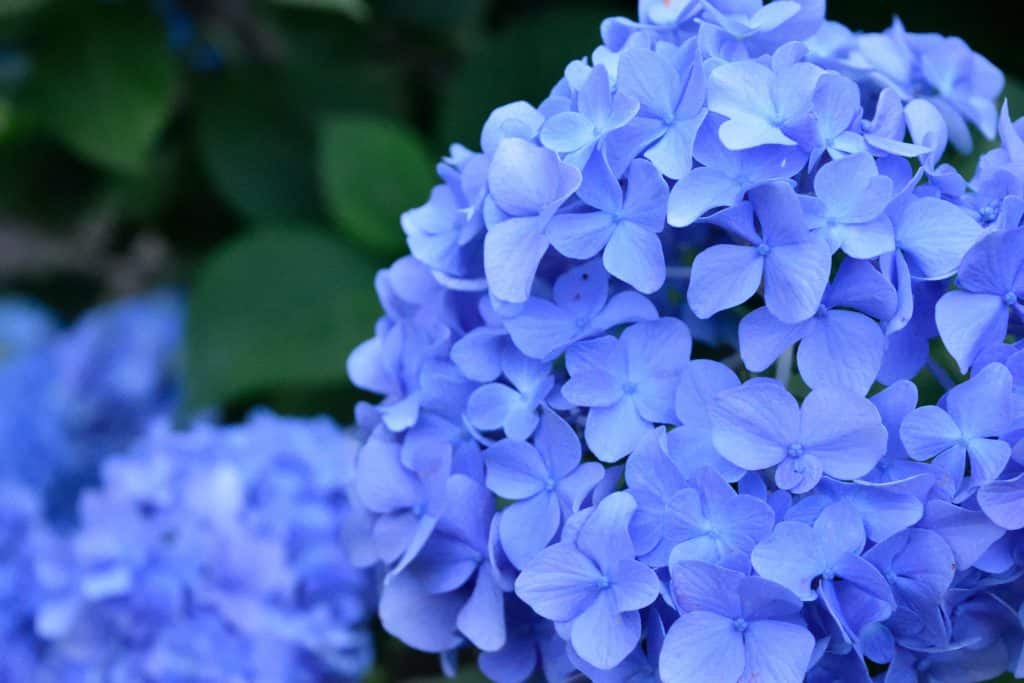One of the showiest and ubiquitous of summertime blooms, hydrangeas are a popular choice for South Shore residents looking to add a pop of color to their yard. Here are a few tips from local master gardeners for keeping hydrangeas happy and cultivating bountiful blooms.


Consider Color
“Hydrangeas have the widest range of colors of any plant, from pure white to lime green, purple and of course the classic blue. The color of Big-leaf (mop-head) and Mountain (lacecap) hydrangeas can be controlled by adding aluminum sulfate to the soil. Always apply in a circle around the plant and rake it into the top 3-4 inches of soil. Be careful not to apply too much as the aluminum sulfate can become toxic to the plant.”
- Bryce White, Seoane Landscape Design
Try New Varieties
“There are some great new varieties of hydrangea. Some we particularly like are: Lime Rickey, a reblooming variety with a flower that turns from lime to white; Little Quick Fire, a panicle (cone shaped) hydrangea that blooms summer to fall and will naturally change from white to pink; and Tuff Stuff, a mountain (lacecap) reblooming variety that lasts from summer to fall.”
- Bryce White, Seoane Landscape Design
Fertilize With Care
“Don’t overfeed your hydrangeas. Fertilize annually in late winter or very early spring with a slow-release fertilizer. Avoid fast-release fertilizers with too much nitrogen as they will cause excessive foliage growth and diminished bloom. We recommend using Espoma’s organic Holly Tone fertilizer on your blue hydrangeas to feed and help keep the soil acidic. For pink hydrangeas, use Espoma’s organic Plant Tone so as not to acidify your soil. For white hydrangeas, either product can be used.”
- Chris Kennedy, Kennedy Country Gardens
Put Down the Pruners
“The general rule for most hydrangeas when it comes to pruning is: Don’t do it! Most hydrangeas flower off the old wood. This means the flowers will grow from the woody stems of last year’s growth. If these stems are cut back, you cut back the number of flowers on the plant. Wait until mid-June to clean up any stems that do not leaf out all of the way. Cut them back just to where there is foliage.”
- Chris Kennedy, Kennedy Country Gardens
Just Enough Sun
“Plant hydrangeas in a spot where they will get at least 3-4 hours of direct sun (preferably morning sun). If your hydrangea is getting less sun than that, you may want to move it to a sunnier spot. But not too sunny!”
- Chris Kennedy, Kennedy Country Gardens, Scituate
Endless Summer
“One popular variety of hydrangea is the Endless Summer, which makes a great planting for around home foundations, as hedges and border gardens, and can even be planted in containers. These shrubs bloom on both new and old growth and have blue flowers in acidic soil and pink blooms in alkaline soil. This variety is especially cold-hardy, so they can withstand cold winters on the South Shore.”
-Gardener’s Choice, Pembroke
Proper Water
“Always water hydrangeas at the bottom of the plant. You want to avoid getting water on the foliage or flowers so they don’t become scorched by the sun. Add a layer of organic mulch around your plant to help retain moisture and add nutrients to the soil. If you’re going to use the flowers in a bouquet, clip the blooms in the morning when the stems are full of moisture.”
-Gardener’s Choice, Pembroke

